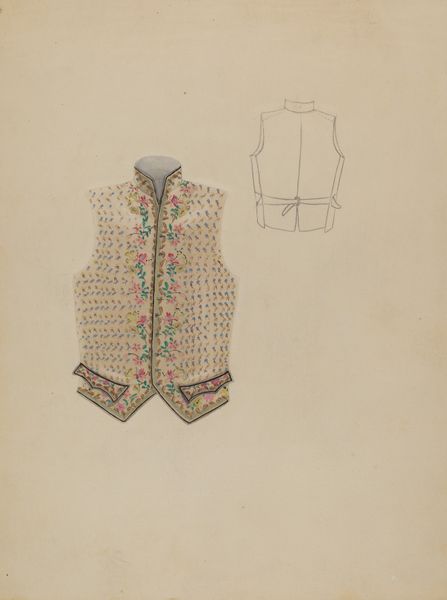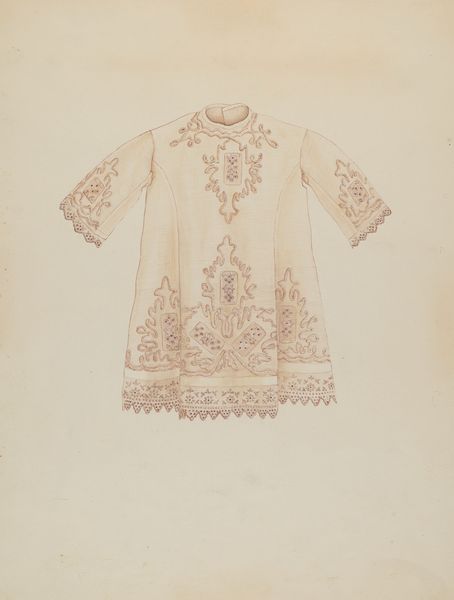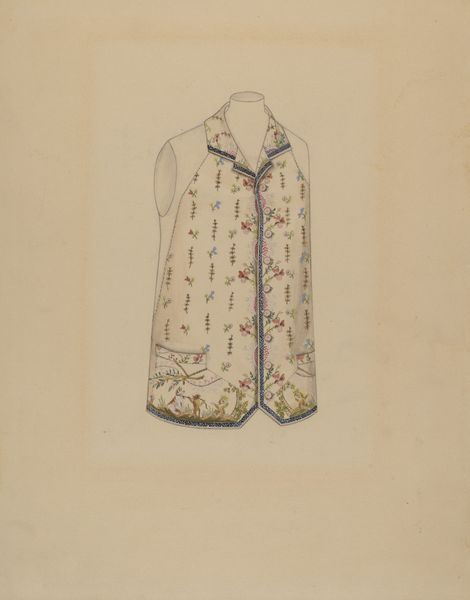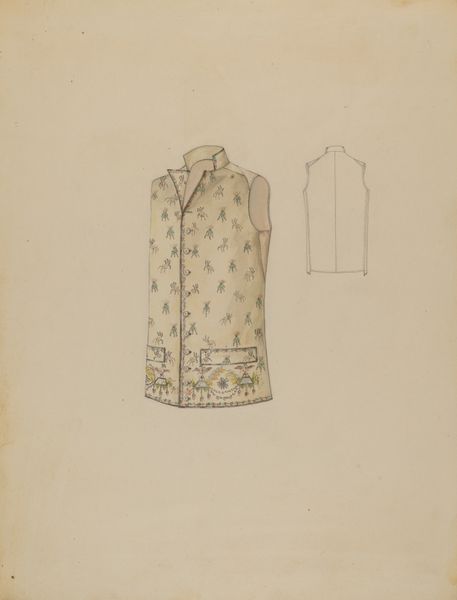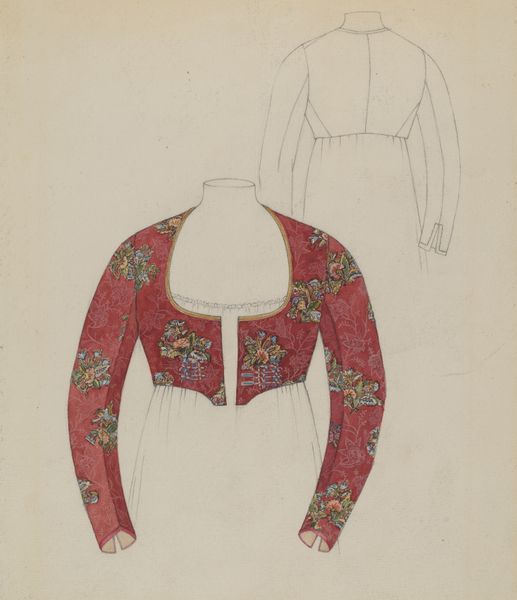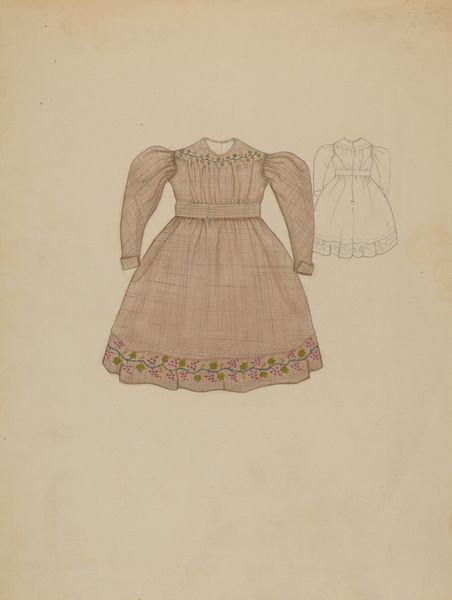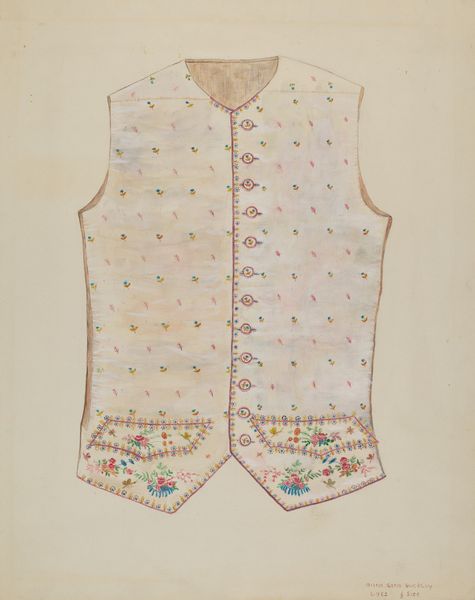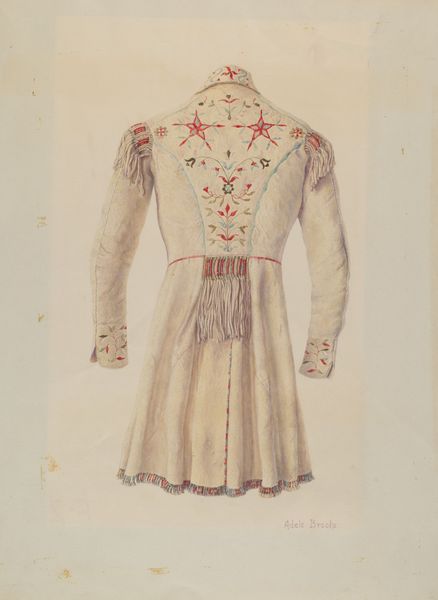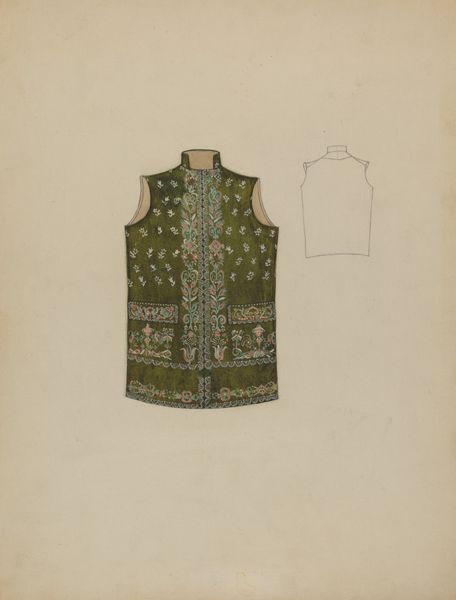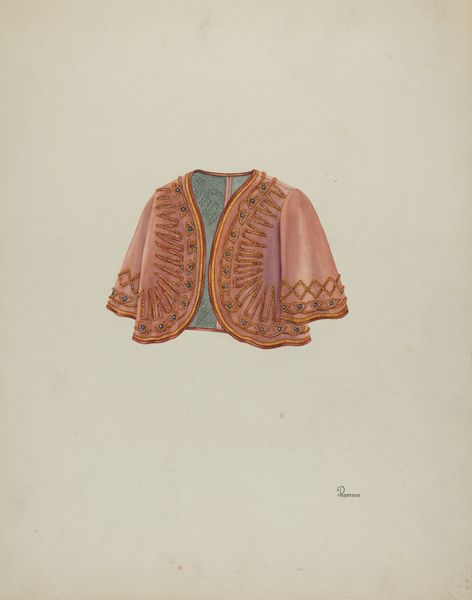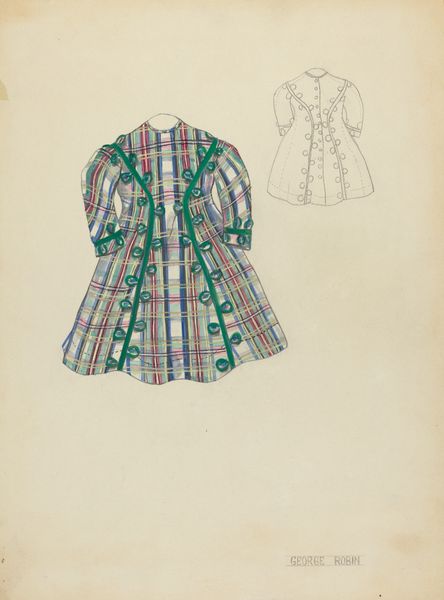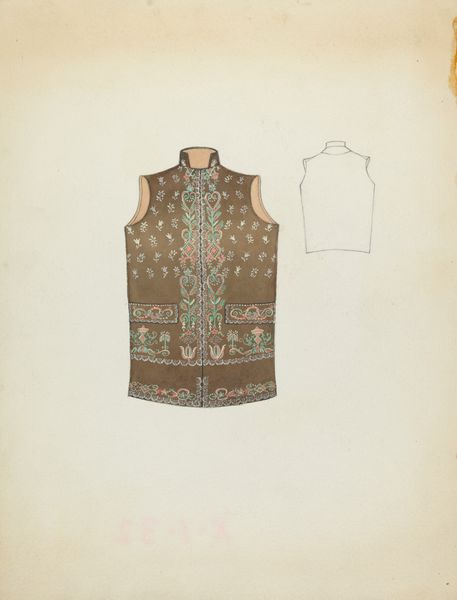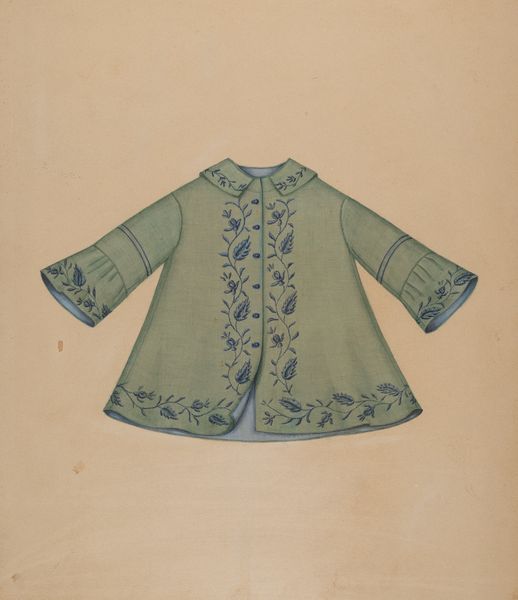
drawing, mixed-media, coloured-pencil, textile, watercolor
#
portrait
#
drawing
#
mixed-media
#
coloured-pencil
#
water colours
#
textile
#
watercolor
#
coloured pencil
#
folk-art
#
watercolour illustration
Dimensions: overall: 17 x 15.3 cm (6 11/16 x 6 in.)
Copyright: National Gallery of Art: CC0 1.0
Curator: This artwork, dated 1935, is titled "Embroidered Woman's Dress," created by Michael Trekur. It appears to be a mixed-media work incorporating drawing, textile, watercolor, and colored pencil. Editor: Well, first off, there's a wistful ghostliness about it. The rendering is delicate, almost as if the dress itself is fading into memory. Is it the pale palette, perhaps? Curator: Perhaps. But looking closer, I think we can consider more about its purpose and production. It seems not just decorative but deeply connected to the textile's means of manufacture. Editor: I'm particularly drawn to the subtle imperfections in the embroidery depicted; tiny deviations in each little 'x' or motif. I love those moments of quiet rebellion within tradition! It almost feels as though Trekur imbued it with an intentional handmade aesthetic. Curator: I find it interesting that you focus on those variations when considering handmade labor and textile arts, a contrast between craft and high art. Editor: The material story begs to be heard, you know? This dress wasn't conjured from thin air; someone’s hands meticulously brought it to life! Think about the social context – folk art. Were these motifs inherited or created by that seamstress or tailor? How much time? What were the material considerations and possibilities of its production? Curator: The application of mixed media makes one consider art not just for aesthetics. Instead, could its rendering represent the value given to production that usually does not take center stage? Editor: It’s interesting how Trekur used these artistic choices—watercolor to give the garment its gentle volume and colored pencils for those meticulous patterns—almost honoring the maker's hand through his. Curator: The contrast really heightens that feeling of intimate, patient craftsmanship versus rapid industrial manufacturing. The dress is so alive, even static on the page! This image now breathes stories for me, both for its materiality and artistic creation. Editor: Right? It’s less about fashion as commodity and more about art as human expression; a quiet hymn to labor, cloth, and skill. What better lens to reflect on labor's possibilities in times of production or craft, from design to manufacture? It is a privilege to meditate on its essence and history, both tangible and not.
Comments
No comments
Be the first to comment and join the conversation on the ultimate creative platform.
